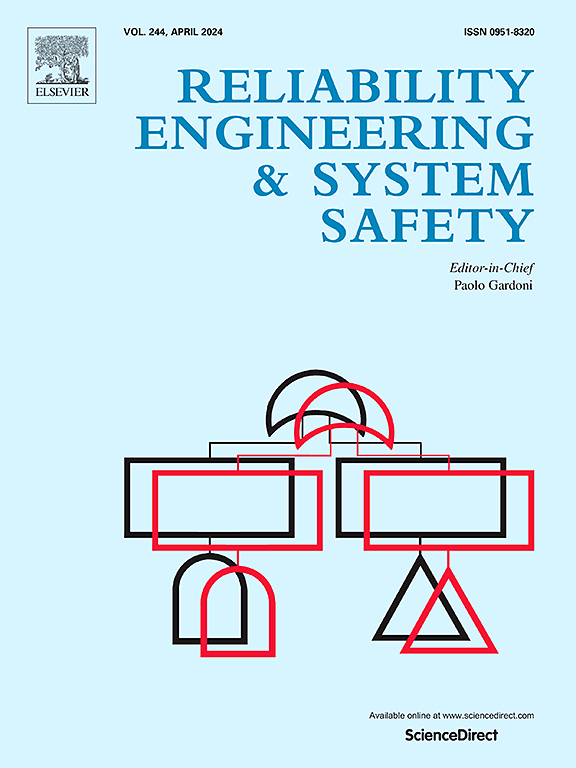工程弹性的系统回顾:海洋工程中的挑战与机遇
IF 11
1区 工程技术
Q1 ENGINEERING, INDUSTRIAL
引用次数: 0
摘要
工程弹性是指在破坏性事件发生后,系统吸收或抵抗损害并迅速恢复其原有功能的能力。由于不可避免的破坏性事件发生的可能性越来越大,以及由于系统的复杂性造成的严重破坏后果,使得工程弹性在过去十年得到了广泛的应用和发展。本文回顾了2014年至今工程弹性的进展,提出了一个制定弹性指标的一般框架。重点介绍了弹性评价中常用的五种弹性建模方法。研究了其应用场景、优缺点。海洋工程非常容易受到复杂海底环境、恶劣工作条件和级联故障的影响。破坏性事件可能导致油气产量下降,或造成人员伤亡、财产损失和海洋环境污染等严重后果。提出了海洋工程弹性研究面临的挑战和研究方向,主要包括全生命周期弹性度量、随机多重风险下巨型系统弹性评估、经济能力驱动的弹性维护、人工智能弹性建模和数字孪生技术的弹性验证。本文章由计算机程序翻译,如有差异,请以英文原文为准。
A systematic review of engineering resilience: challenges and opportunities in ocean engineering
Engineering resilience is used to measure the ability of a system to absorb or resist damages and quickly restore its original function after destructive events occur. The increasing probability of unavoidable destructive events, and the serious consequences of damages due to system complexity, have led to the widespread application and development of engineering resilience in the past decade. This article reviews the progress of engineering resilience from 2014 to the present, proposing a general framework for developing resilience metrics. Special attention is paid to the five commonly used resilience modeling methods in resilience evaluation. The application scenarios, advantages, and disadvantages are investigated. Ocean engineering is highly susceptible to complex subsea environments, harsh working conditions, and cascading failures. Destructive events can lead to decrease in oil and gas production, or serious consequences of casualties, property damage, and ocean environmental pollution. The challenges and research directions on resilience in ocean engineering are presented, focusing on the resilience metric of the entire lifecycle, resilience evaluation of giant systems under random multiple risks, resilience maintenance driven by economic capability, resilience modeling with artificial intelligence, and resilience verification with digital twin technology.
求助全文
通过发布文献求助,成功后即可免费获取论文全文。
去求助
来源期刊

Reliability Engineering & System Safety
管理科学-工程:工业
CiteScore
15.20
自引率
39.50%
发文量
621
审稿时长
67 days
期刊介绍:
Elsevier publishes Reliability Engineering & System Safety in association with the European Safety and Reliability Association and the Safety Engineering and Risk Analysis Division. The international journal is devoted to developing and applying methods to enhance the safety and reliability of complex technological systems, like nuclear power plants, chemical plants, hazardous waste facilities, space systems, offshore and maritime systems, transportation systems, constructed infrastructure, and manufacturing plants. The journal normally publishes only articles that involve the analysis of substantive problems related to the reliability of complex systems or present techniques and/or theoretical results that have a discernable relationship to the solution of such problems. An important aim is to balance academic material and practical applications.
 求助内容:
求助内容: 应助结果提醒方式:
应助结果提醒方式:


